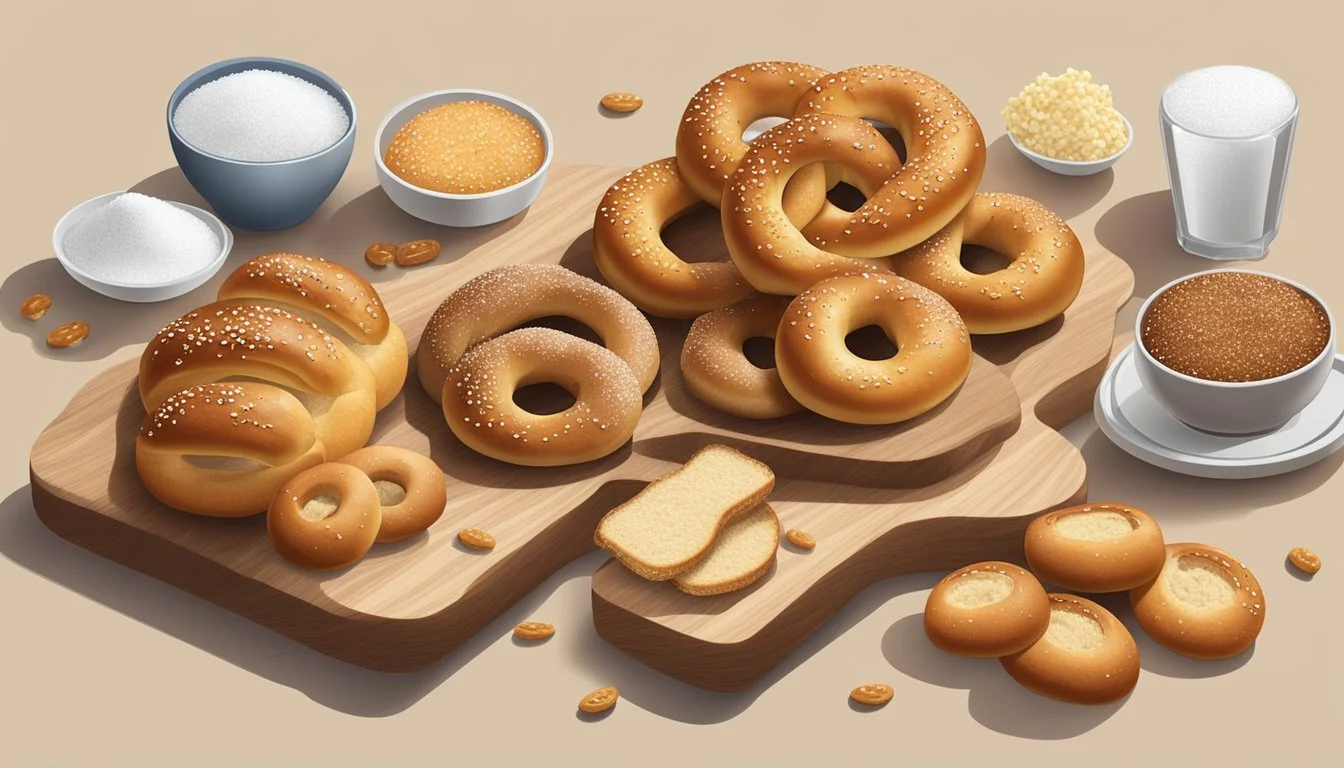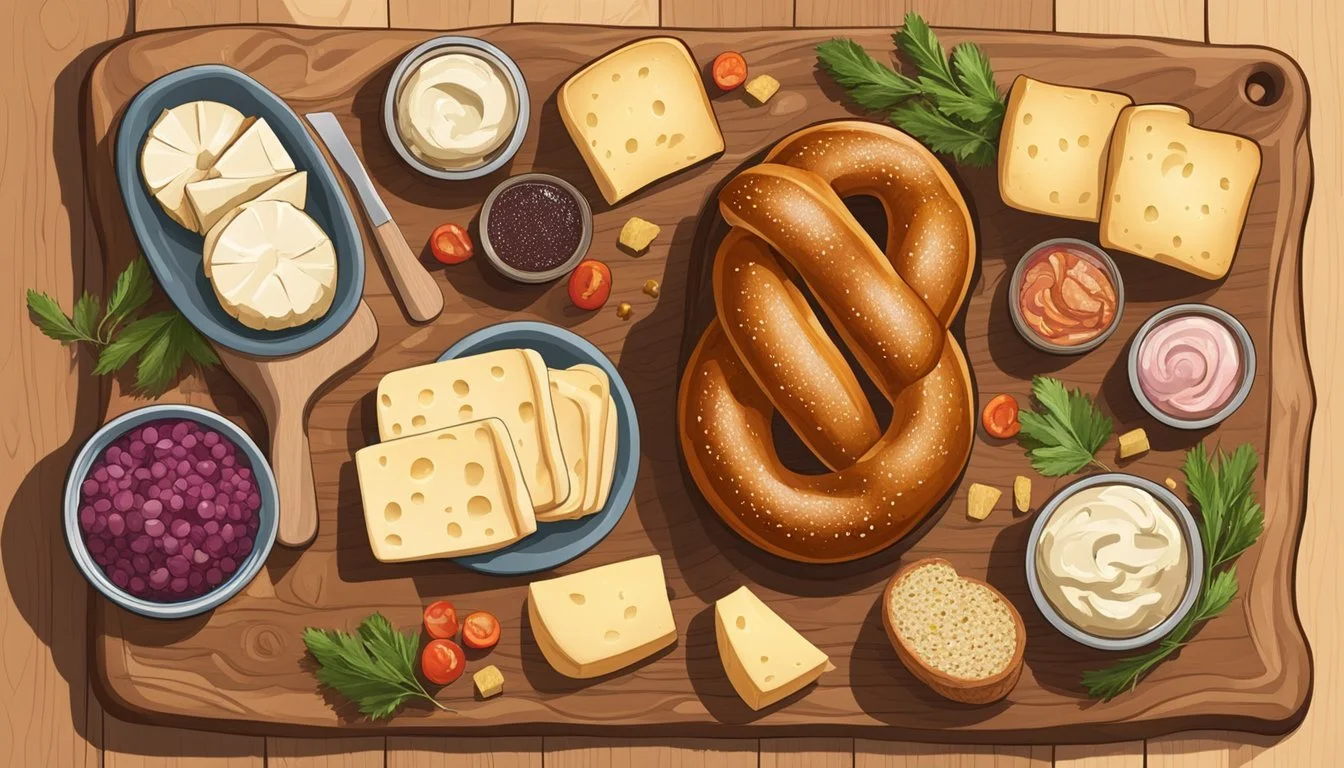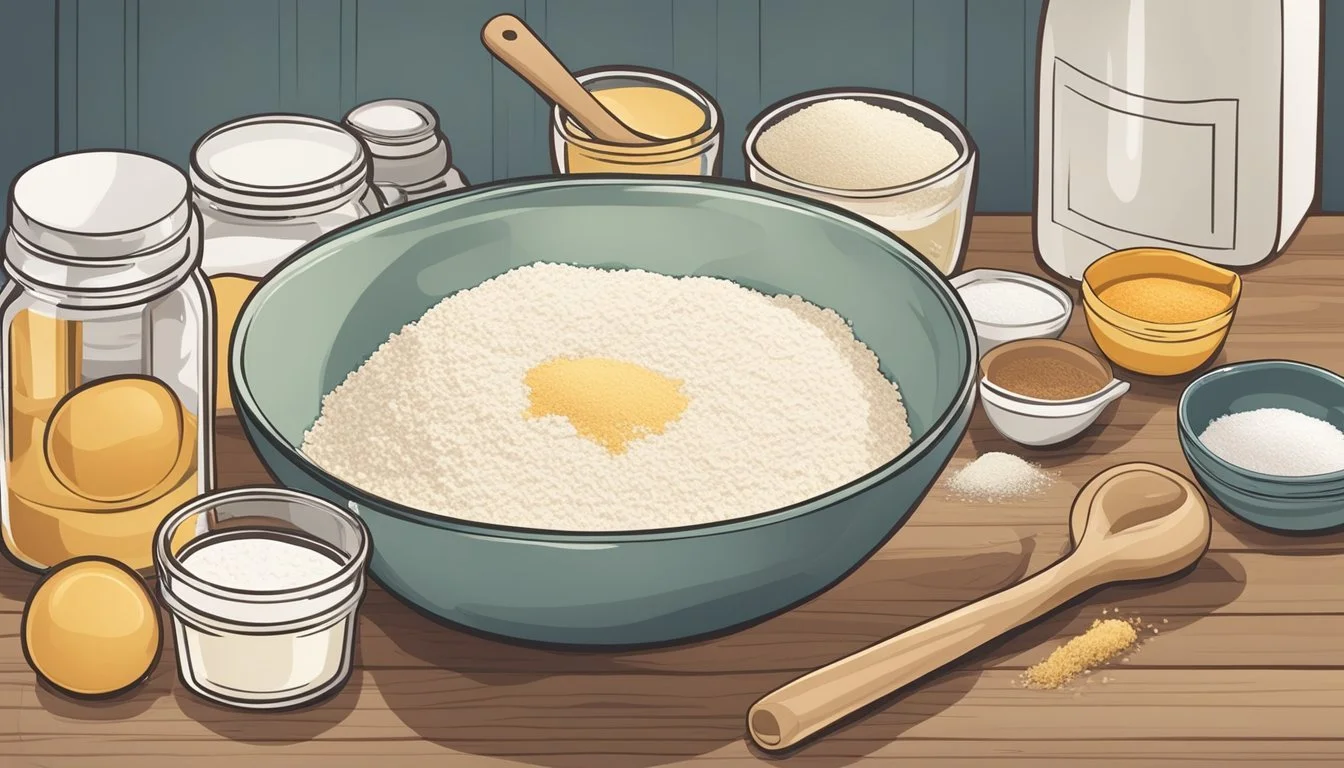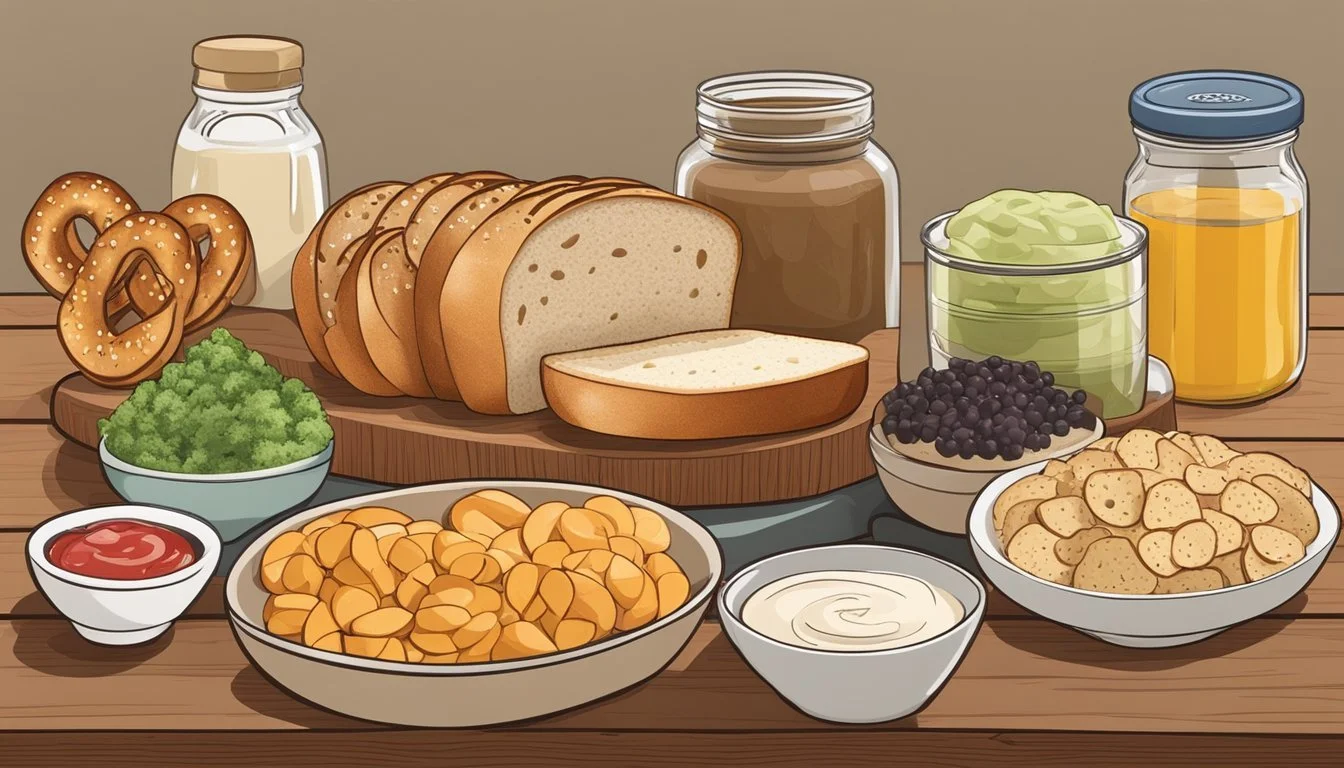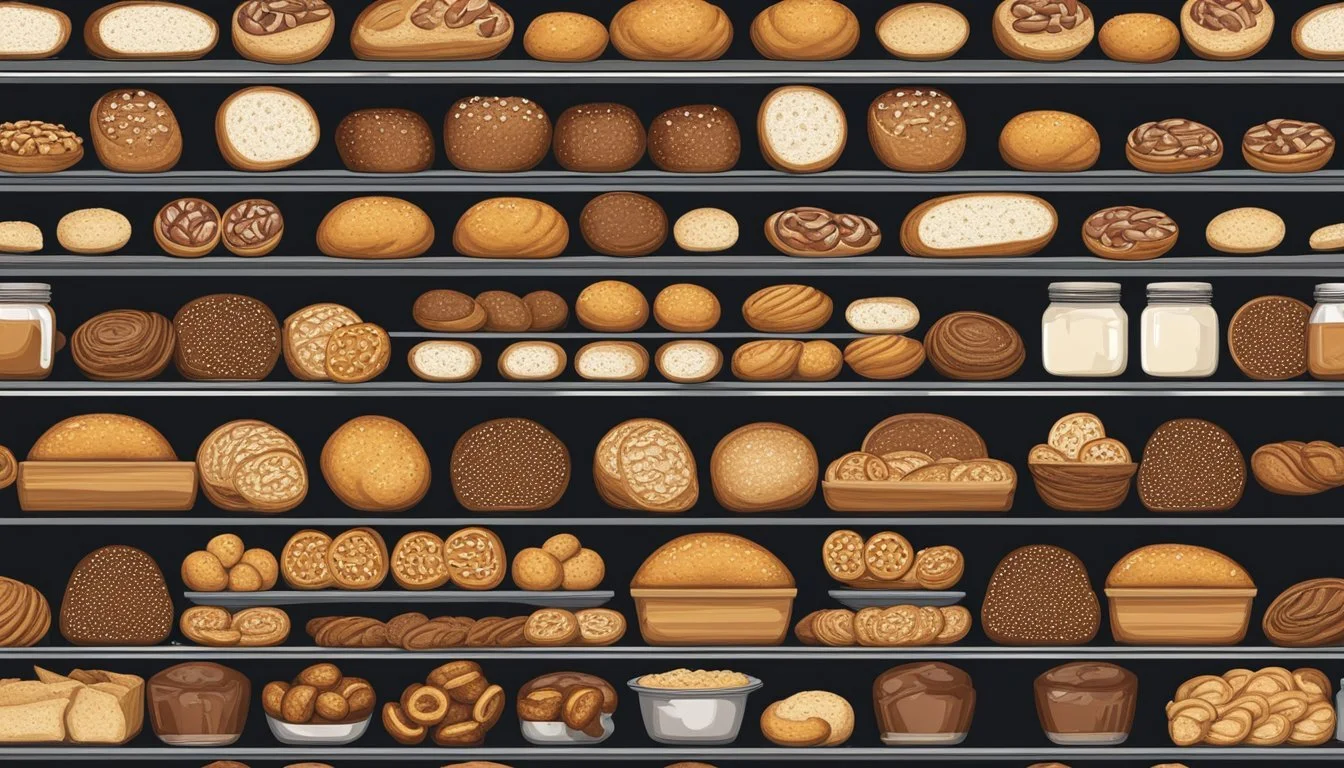Pretzel Bread Substitutes
Top Alternatives for Your Sandwiches
Pretzel bread, with its distinct chewy texture and unique flavor profile marked by a touch of malty sweetness and a glossy, deep brown crust, has become a favorite in many households and restaurants. It’s often seen in the form of buns for sandwiches, rolls for dinner, or as a base for innovative appetizers. However, with a rising interest in dietary variations and health consciousness, consumers and chefs alike are seeking substitutes for pretzel bread that cater to preferences or restrictions such as gluten intolerance or a reduced-carbohydrate diet.
Substitutes for traditional pretzel bread include a variety of options that can match different needs while still providing that satisfying bread element in a meal. For those avoiding gluten, gluten-free pretzel bread made with alternative flours offers a similar texture without the wheat-based ingredients. In recipes that typically use pretzel bread for its crispy exterior, like coatings or toppings, alternatives such as gluten-free breadcrumbs or even crushed gluten-free pretzels can provide a similar crunch and flavor.
When considering healthier options or simply a different taste profile, bakers and cooks may opt for breads made from whole grains, nuts, or seeds, which can serve as a hearty base for sandwiches or as an accompaniment to soups and salads. These bread substitutes, while diverging in flavor and texture, still honor the role that pretzel bread plays in a meal, providing structure, taste, and satisfaction. Through these alternatives, the essence of pretzel bread can be adapted to fit a wider range of dietary needs and culinary explorations.
The Role of Pretzel Bread in Cuisine
Pretzel bread occupies a distinctive niche in the culinary world with its unique texture and flavor profile influenced by specific preparation techniques.
Understanding Pretzel Bread's Unique Characteristics
Pretzel bread is renowned for its distinctive, chewy texture and the characteristic glossy, dark brown crust. This is a result of a baking soda bath that the dough undergoes before baking. The alkaline bath creates a reaction, resulting in the bread's unique crust. Ingredients like milk and butter add to the richness of the dough, while yeast is essential for leavening, contributing to the bread's volume and airy interior. Depending on the recipe, sweeteners such as dark brown sugar or light brown sugar can be added to give a subtle sweetness that contrasts with the typically salty flavor marked by coarse salt sprinkled on top.
Traditional Uses of Pretzel Bread
Traditionally, pretzel bread has served both as a standalone snack and as an accompaniment to other dishes. The saltiness and crunchy crust of a pretzel make it an ideal pairing with beer, fitting snugly into the beer gardens of Germany. In dining, it's commonly used for sandwiches because of its sturdy texture that holds up well against a variety of fillings and condiments. Whether sliced or whole, pretzel bread adds a satisfying texture and flavor that complements both sweet and savory ingredients.
Basics of Baking Substitutes
When it comes to baking, finding the right substitutes can preserve the texture and flavor of your favorite recipes. With a strategic approach, one can often find suitable replacements for standard ingredients in their pantry, such as those typically found in pretzel bread.
Choosing Substitutes for Texture and Flavor
The success of a baking substitute often hinges on matching the texture and flavor profile of the original ingredient. When replacing elements in a pretzel bread recipe, one should consider how each substitute will interact with others. For example, swapping out bread flour for all-purpose flour may affect the bread's characteristic chew due to lower protein content, which might necessitate adding vital wheat gluten to compensate.
Substitutes for Flour:
Bread flour: All-purpose flour + vital wheat gluten
Whole wheat flour: May be used for a denser texture
Substitutes for Yeast:
Baking soda + acid (like buttermilk) for leavening in a pinch
Sourdough starter for a natural yeast alternative
Each substitute comes with trade-offs in taste and consistency; one's goal is to approximate the hearty, slightly malty flavor alongside the shiny, chewy crust characteristic of pretzel bread. Baking soda, which can create a similar browning effect, is often paired with an acid to structurally replicate yeast's leavening effect.
Kitchen Staples That Can Replace Pretzel Bread
One can employ everyday kitchen staples to stand in for pretzel bread without compromising on enjoyment. For a homemade recipe, simple items like milk and butter can deliver satisfying results.
Stand-ins for Pretzel Bread:
Bagels: Offer similar chewiness and can be topped with coarse salt
Sourdough bread: Provides a comparable flavor profile and texture
Breadsticks or soft bread rolls: Similar dough consistency and can mimic the crust's mouthfeel when brushed with butter and sprinkled with salt
The key to using substitutes is understanding how the properties of these staples—moisture content, fat levels, and their potential to develop gluten—affect the final product. Imagination and a well-stocked pantry are invaluable assets for any baker looking to improvise while maintaining the integrity of their culinary creations.
Crunchy and Savory Alternatives
When looking for a crunchy exterior or a savory addition to recipes, there are several alternatives to pretzel bread that provide similar texture and flavor enhancements.
Cracker and Chip-Style Substitutes
Finding the right texture for recipes that typically call for pretzel crumbs can sometimes be a challenge, but using cracker and chip-style substitutes is an excellent way to emulate that desired crunchiness. Crackers can easily be crushed into coarse crumbs, serving as a suitable substitute in coatings for baked or fried foods. Additionally, tortilla chips and potato chips offer a distinctly satisfying crunch and can be crushed to a preferred size for textural variation in casseroles, toppings, or breading mixtures.
Tortilla Chips: Crush using a rolling pin for a coarser texture.
Potato Chips: Select plain or lightly seasoned variations to avoid overpowering the dish.
Using Nuts and Seeds for Depth of Flavor
Incorporating nuts and seeds into a dish adds not only a crunchy texture but also depth in flavor. Almonds, sesame seeds, poppy seeds, and sunflower seeds can be finely chopped or ground to achieve a breadcrumb-like consistency that is ideal for encrusting proteins or sprinkling over salads. Nuts and seeds bring a nutty and sometimes earthy profile that can enhance the overall taste of a dish.
Here's a mini-table outlining the uses and benefits of these substitutes:
Substitute Texture Flavor Profile Ideal Use Almonds Crunchy Nutty Coatings, toppings Sesame Seeds Slightly crunchy Rich, nutty Encrusting, dressings Poppy Seeds Crunchy Subtle, slightly nutty Baking, dressings Sunflower Seeds Firm, crunchy Nutty Salads, breading
Utilizing these substitutes can add both textural appeal and savory taste to a range of culinary creations.
Gluten-Free and Allergy-Friendly Options
In the pursuit of satisfying the need for a gluten-free diet, various substitutes have been developed to replace pretzel bread, ranging from other gluten-free bread options to creative uses of non-traditional items.
Gluten-Free Bread Options
For those who must avoid gluten due to allergies or celiac disease, gluten-free bread options can fill the void left by traditional pretzel bread. Using ingredients like almond flour, oats, rolled oats, and rice flour, manufacturers can create bread-like products that are both safe and enjoyable for those with gluten sensitivities. Notably, almond flour is a popular alternative due to its rich, nutty flavor and nutritional benefits.
Almond Flour: A prime choice for bread substitutes that adds a distinct, hearty flavor to gluten-free recipes.
Oats/Rolled Oats: Ensure they are labeled gluten-free to avoid cross-contamination with gluten-containing grains.
Creative Alternatives to Traditional Bread
In addition to gluten-free bread, individuals seeking alternatives to pretzel bread can use a variety of foods to mimic its texture and role in meals. Cornflakes, rice, and ground nuts offer diverse textures and flavors. Cornflakes can be crushed and used as a bread crumb substitute in recipes for added crunch, while cooked rice or ground almonds can function as a base in forming bread-like shapes and consistencies.
Bread Crumb Substitute:
Cornflakes: Crushed for a crispy, crunchy topping or binding ingredient.
Ground Nuts: Provide a robust consistency and nutty flavor to dishes when used in place of bread crumbs.
In crafting these alternatives, it is critical to read labels and verify that the substitutes are free from cross-contaminants and confirm they meet the gluten-free threshold suitable for individuals with allergies.
Homemade Pretzel Bread Substitutes
When it comes to cooking, exploring homemade substitutes for pretzel bread can invigorate a classic recipe with new textures and flavors. These alternatives, whether seeking breadcrumb replacements or fresh bread variations, offer a way to personalize dishes with items readily available in one's kitchen.
DIY Breadcrumb Replacements
For those looking to mimic the crunchy, distinct coating that pretzel breadcrumbs provide, homemade breadcrumb substitutions are simple to make and highly versatile. To create an authentic texture:
Tear stale pretzel rolls into small pieces.
Use a blender or food processor until the desired consistency of breadcrumbs is achieved.
For a twist:
Toast stale bread in the oven until crisp.
Process as above to create coarse or fine crumbs.
These homemade breadcrumbs can elevate dishes with a pretzel-like crunch and are excellent for breading, toppings, or as a casserole layer.
Fresh Bread Alternatives
In recipes where pretzel rolls are typically used for their softness and subtle sweetness, one could opt for fresh bread alternatives. Homemade recipes for fresh bread can be tailored to mirror the dense texture and rich flavor profile of pretzel bread. Utilize these alternatives for a similar culinary experience:
Brioche: Known for its buttery richness and tender crumb.
Challah: Offers a slightly sweet taste and pliable texture, perfect for sandwiches or French toast.
Bagels: Boiled before baking, they provide a chewy texture akin to pretzel bread.
Each of these bread types can be sliced, diced, or torn and then utilized in any cooking application that typically calls for pretzel rolls.
Utilizing Leftovers and Unusual Ingredients
Innovative cooking often involves incorporating common kitchen staples in unconventional ways. This section explores how to repurpose leftover cereals and snacks into pretzel bread substitutes and how to use alternative ingredients to enhance texture and breading.
Transforming Leftover Cereals and Snacks
Leftover cereal and snacks often go stale sitting in the pantry, yet they contain untapped potential as breading or dough mix-ins.
Crush to a fine texture to substitute for traditional breadcrumbs.
Mix into pretzel dough for a subtle sweetness and added crunch.
Cornbread and Wheat Bread:
When stale, these can be crumbled and toasted into a flavorful breadcrumb alternative.
Soak in milk to integrate into pretzel dough, enhancing moisture and shelf-life.
Chex and Cheez-Its:
Crush these snacks for a distinctive, savory breading.
Replace a portion of flour with Cheez-Its' fine powder to introduce a cheese flavor in the pretzel crust.
Pretzel Twists:
Transform stale pretzels by pulsing them into fine crumbs.
Use them as a 1:1 substitute for breadcrumbs to coat meats or as a topper for casseroles.
Oats and Crushed Tortilla Chips:
Pulse into a coarse meal for a hearty, gluten-free alternative in toppings and crusts.
Blend with herbs and spices for a textured coating on proteins or vegetables.
Alternative Ingredients for Texture and Breading
Embracing unconventional ingredients can lead to exciting new textures and flavors.
Cereal:
Incorporate crushed cereal such as oat-based types into dough for a nuanced taste and to improve binding.
Cornbread and Wheat Bread:
Use crumbled variants in fillings or toppings to provide a dense, satisfying chewiness akin to traditional pretzel bread.
Chex and Cheez-Its:
Blend into a fine powder and combine with flour to introduce a novel texture and cheesy tang to the bread.
Pretzels and Twists:
Finely ground, they offer a malty flavor and crispness when used as a coating or mixed into dough.
Oats:
Can be rolled and added to dough for a rustic, full-bodied texture in the finished bread.
Crushed Tortilla Chips:
Provide a corn-based twist when used as breading; ideal for gluten-free diets.
Each ingredient contributes its unique characteristics to the dish, thereby reducing food waste while enhancing the culinary experience.
Enhancing Dishes with Pretzel Bread Substitutes
When traditional pretzel bread is unavailable, there are various substitutes one can incorporate into dishes to maintain that distinctive texture and flavor. Opting for these alternatives allows individuals to creatively adapt and potentially enhance their culinary creations.
Substitutes in Cooking and Serving
In the absence of pretzel bread, individuals can select a range of other bread types when preparing meals. Bagels, with their dense, chewy texture, serve as an excellent base for sandwiches or can be used as an accompaniment to soups and stews. Similarly, brioche buns offer a richness that pairs well with robust dishes, providing a subtly sweet undertone.
For a homemade approach, preparing a dough with flour, yeast, and water then baking it in the oven can replicate the satisfying chewiness of pretzel bread. Cooking techniques like boiling the dough in a baking soda solution prior to baking can achieve the distinct pretzel-like crust.
Signature Seasonings and Topping Blends
The signature flavor of pretzel bread often comes from its unique toppings and seasonings. To mimic this profile, chefs can use a blend of coarse sea salt and melted butter to emulate the classic pretzel taste on substitutes like bagels or homemade breads.
Seasonings & Toppings Application Examples Parmesan Cheese Sprinkling on top before baking Coarse Sea Salt Adding after brushing with melted butter Melted Butter Brushing on before and after baking Cheese Sauce Serving as a side for dipping Honey Mustard Offering as a tangy, sweet dip
Incorporating honey mustard as a dip or glaze can introduce a contrasting sweetness to the salty exterior. Combining parmesan cheese into the seasoning blend can add a nutty, umami dimension that complements the bread's texture. These seasonings and toppings not only replace the taste of pretzel bread but can also elevate the dish to a new level of flavor complexity.
Storing and Preserving Substitutes
When looking for alternatives to pretzel bread, proper storage and preserving techniques are essential to maintain the freshness and extend the shelf life of the substitutes.
Best Practices for Freshness and Longevity
Airtight Containers: Storing bread substitutes in an airtight container is critical to keeping the product fresh. This method helps to keep out air and moisture, which can cause bread to become stale quickly.
Cooling: After cooling completely, placing the substitute pretzel bread into storage helps prevent condensation. Moisture is an enemy of freshness, so ensuring the bread is cool before storage is vital.
Breadcrumbs: For bread that is going stale, repurposing it into breadcrumbs can be a great way to minimize waste and extend the life of the product. Simply dry the bread out completely, then crush or process it into coarse crumbs.
To maintain the quality over time, consumers should avoid exposing the bread to direct sunlight or open air, as these factors accelerate the staling process. It is also beneficial to sometimes wrap the substitute in foil with a small amount of water to reintroduce moisture when reheating, especially in a dry environment. However, for optimal results, consumers should consume the fresh bread substitute as soon as possible after it is made or purchased.

